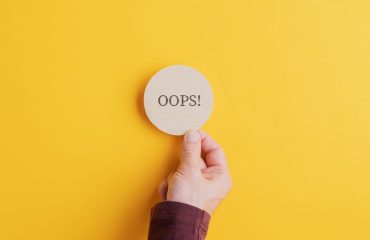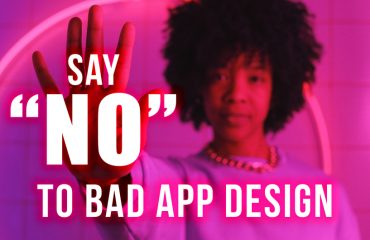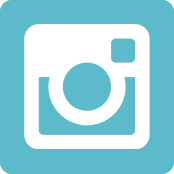The design of your custom, enterprise app involves taking much more into account than your company’s branding and stakeholder preferences.
Creating user-friendly applications, that actually make tasks easier, has become somewhat of a science. Professionals in the app and software development world refer to this as User Experience Design.
User experience (UX) design is designing with the end user in mind. It is more than just how the app looks; UX considers the experience of the user and strives to ensure it is pleasant rather than frustrating.
Great app designers know that usability and accessibility take a higher priority than designing for aesthetics alone.
Here’s what your app designer wishes you knew:
1. Know your user
Knowing your user is the primary rule of app design and pretty much all decisions flow from it. User empathy should inform every stage of your app development, but it’s especially important when deciding the flow of your app, colors and backgrounds, font size, and where certain elements are placed on the screen.
Having empathy for your users means putting their needs first: helping solve their problem before settling the tasks on your agenda. For enterprise mobile apps this might mean prioritizing features in the flow of the app that aren’t necessarily at the top of the company executive’s agenda. If the app solves a user’s problems, they’re much more likely to use it, which satisfies everyone’s goals.
2. Keep it simple
Simplicity reigns in all modern graphic design. But it’s especially important when designing apps because of the smaller screens where they are viewed. Simple design makes the app clear for users and helps them find their next step in a single glance.
A screen with crowded layout or too much content will throw a user off. Their eyes won’t know where to settle, and it will take them longer to complete tasks and move through the app. There is also a defined hierarchy regarding size and placement in design that conveys importance to users, and too many elements on the screen can disrupt this.
3. Make it easy
Good app designers try to minimize the number of clicks users have to make, forms they have to fill out, and amount they have to scroll down a screen. They design apps for efficiency, so users can get the elements they’re looking for as quickly and easily as possible.
Designers also consider what kinds of mistakes and errors might be common for users and try to create elements that help users through the process. For enterprise mobile apps, prioritizing efficiency means workers get their jobs done faster and can move on to other tasks.
4. Establish constraints
Everyone involved in the app design process comes to the table with ideas and priorities for the app’s features and function. But, trying to incorporate every idea into app design can make for a confusing user experience.
Good design solves one problem at a time. Limiting your goals helps your team rationalize decisions and prioritize features. Decisions on flow and appearance should be tied to your goals, and based on what they will do for users, as opposed to what your stakeholders prefer.
5. Understand context
Designers take into account how screens flow, and how the user will react to them. They make sure that the look of your app comes secondary to its usability. This means creating consistency in color and placement for basic elements across each screen so the user’s learning curve is low.
Understanding context also means considering when and where users will be using the app. If the app will be used outside by a field service team, your designer might create screens with higher contrast elements to combat any visibility issues from sunlight glare.
6. Validate your work
Basic design rules apply almost universally, but every app design involves making some assumptions about your users and every user group is different. Even the best-informed projects have biases because we’re all human.
Good app design processes involve testing and continuous modification to work toward a more seamless experience. Great designers get feedback from users and stakeholders to gain ideas.
Final Thoughts
Experienced mobile app designers understand all these principles and will guide their clients to prioritize them.
The good news is that there is almost always a way to design with user experience in mind and still satisfy branding guidelines and stakeholder opinions. Knowing the above design guidelines, and emphasizing them to your team, will make the mobile app design process that much easier.






